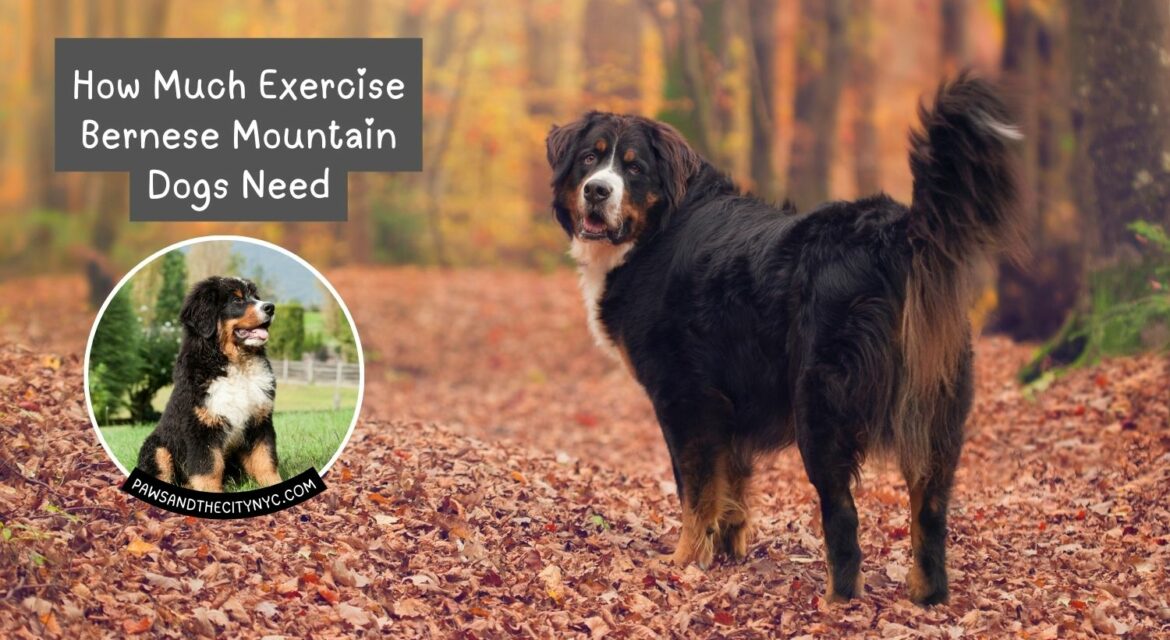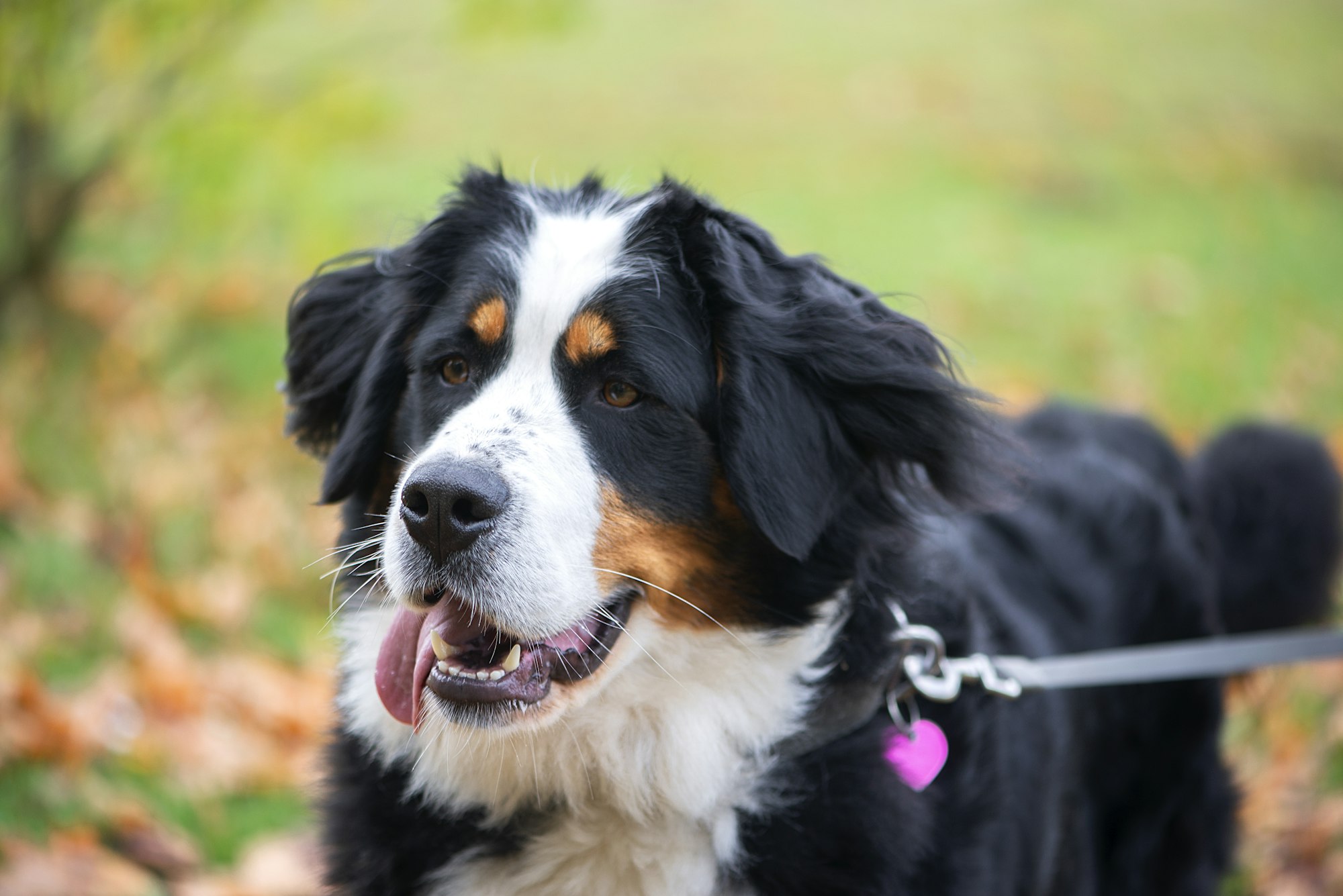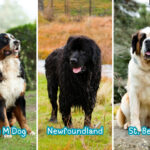 2 May
2 MayHow Much Exercise Bernese Mountain Dogs Need
Bernese Mountain Dogs are known for their striking looks and gentle demeanor, but behind their calm exterior lies a significant amount of energy that needs to be managed with proper exercise. Regular physical activity is not just a nice-to-have; it’s essential for their physical health and mental well-being.
In this post, we’ll explore how much exercise these beautiful dogs need to stay healthy and happy, considering their size, energy levels, and the unique aspects of their breed.
How Much Exercise Do Bernese Mountain Dogs Need?
Bernese Mountain Dogs require moderate to vigorous exercise to stay healthy and happy. Adult Bernese Mountain Dogs typically need at least one hour of exercise per day, which should include a combination of walking, playtime, and other activities like hiking or training. Puppies and senior dogs may require adjusted amounts based on their energy levels and physical capabilities. To meet their needs, owners should ensure a mix of physical and mental stimulation tailored to their dog’s age and health.
Understanding the Exercise Needs of Bernese Mountain Dogs
Bernese Mountain Dogs are a large and sturdy breed, but like all dogs, they thrive with the right amount and type of exercise. Understanding their needs can help prevent common health issues and ensure they lead a balanced and joyful life.

What Constitutes Adequate Exercise?
Adequate exercise means physical activity and mental stimulation for Bernese mountain dogs. Typically, an adult Berner needs at least an hour of moderate daily exercise. This could include walks, gentle hikes, or play sessions. However, it’s crucial to mix up their activities to engage different muscles and keep their minds sharp.
For example, you might combine a 30-minute walk with a 30-minute interactive play or training session.
Exercise Needs by Age
- Puppies: Bernese Mountain Dog puppies have lots of energy, but their exercise should be carefully managed to avoid damage to their developing joints. Short, frequent play sessions—about 5 minutes for each month of age—spread throughout the day are ideal.
- Adults: Adult Bernese Mountain Dogs require consistent, daily exercise to maintain their health. One to two hours of activity like walking, playing fetch, or light jogging will help them stay fit and content.
- Seniors: Bernese Mountain Dogs’ exercise needs will decrease as they age. Their joints can become less supple, and their energy levels may wane. Gentle walks and light play are sufficient, and monitoring them for any signs of discomfort during activity is important.
By tailoring the exercise routines to the age and health of your Bernese Mountain Dog, you can ensure they receive the right amount of physical activity without overexertion.
Types of Exercise Suitable for Bernese Mountain Dogs
As a professional dog groomer at PawsAndTheCityNYC, I’ve observed many Bernese Mountain Dogs and the common exercise mistakes their owners make. Ensuring your Berner gets the right type of exercise can make a big difference in their overall health and happiness. Here are some of the best ways to keep your Berner moving:
Walking
Walking is a fundamental activity for Bernese Mountain Dogs. Ideally, adult Berners should be walked at least twice a day for a total of about one hour. This provides them with physical exercise and sensory stimulation from their environment, which is crucial for their mental health. Puppies and senior dogs might require shorter, more frequent walks to suit their energy levels and physical capabilities.
Hiking
Hiking is particularly beneficial for this breed due to their sturdy build and endurance. It helps in strengthening their muscles and joints, which is vital given their predisposition to joint issues. Before you hit the trails, make sure your dog is well-hydrated, check the weather to ensure it’s not too hot, and carry some basic first aid supplies. Always start with easier trails and gradually build up to more challenging hikes as your dog gets used to the activity.
Playtime
Interactive playtime is essential for keeping your Bernese Mountain Dog engaged. Use toys that promote activity, like balls or frisbees, and consider puzzle toys that challenge their minds. Games like tug-of-war and hide-and-seek can also stimulate their brains and bodies. Regular play sessions help prevent boredom and can reduce the likelihood of behavior issues.
Training as Exercise
Incorporating training into your Bernese Mountain Dog’s routine is another excellent way to exercise both their body and mind. Obedience training, agility courses, or even simple tricks can provide mental stimulation while also reinforcing their learning and behavior. Agility training, in particular, is great for enhancing their coordination and flexibility.

Exercise Tips for Different Seasons
Bernese Mountain Dogs can enjoy outdoor activities all year round, but adjusting their exercise routines according to the season is important to keep them safe and comfortable. Here are some tips for managing their activity in summer and winter:
Summer Exercise Tips
- Early Morning or Late Evening Walks: Avoid walking your Bernese during the day’s peak heat. Instead, opt for early morning or late evening when the temperatures are cooler.
- Access to Shade and Water: Ensure your dog has access to plenty of shade and fresh water during outdoor activities to prevent overheating.
- Cooling Mats and Vests: Consider using cooling mats or vests to help regulate your dog’s body temperature during walks or playtime.
- Limit Strenuous Exercise: On particularly hot days, avoid strenuous activities like long hikes or running. Opt for shorter, more frequent walks instead.
Winter Exercise Tips
- Protective Gear: Use dog boots and coats to protect your Bernese from cold temperatures and harmful substances like ice melt, which can irritate their paws and skin.
- Adjust Activity Levels: Snow can be a great play environment for Bernese Mountain Dogs, but be mindful of icy conditions that can lead to slips and falls. Adjust the intensity of outdoor activities based on the safety of the environment.
- Indoor Exercise Options: On extremely cold days, consider indoor activities like playing hide and seek, setting up an obstacle course, or practicing new tricks to keep them physically and mentally stimulated.
- Regular Paw Care: After winter walks, check your dog’s paws for ice build-up between the toes and wipe their paws to remove any ice melt or debris to prevent irritation.
Safety Tips for Extreme Weather Conditions
- Monitor for Distress: Always watch for signs of distress in your dog, such as excessive panting in the heat or reluctance to walk in the cold. These could be signs that the weather is too extreme for them.
- Stay Hydrated: Regardless of the season, keeping your Bernese hydrated is crucial to their health during exercise.
- Know When to Stay In: Sometimes, the best decision is to skip the outdoor exercise altogether. Extreme weather conditions like heatwaves or blizzards are times when staying indoors is safer for both you and your dog.
By adapting your Bernese Mountain Dog’s exercise routine to the changing seasons and being mindful of weather conditions, you can ensure they stay active and healthy all year round.




